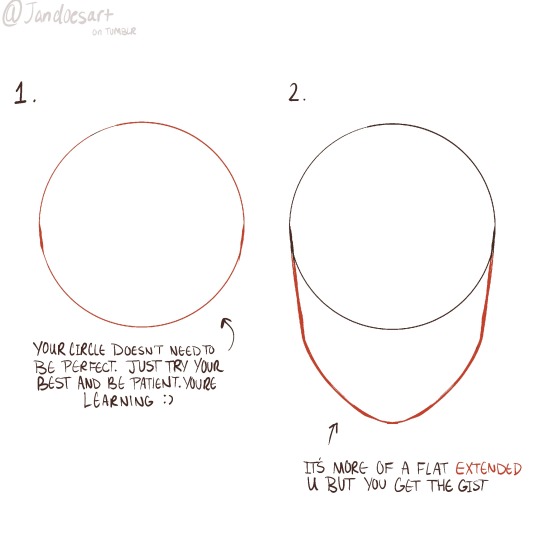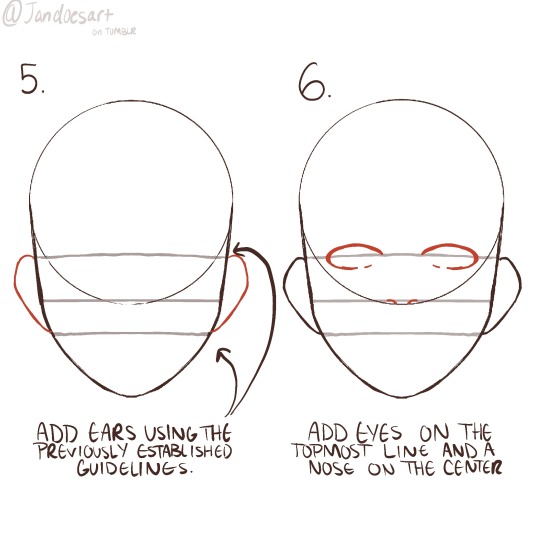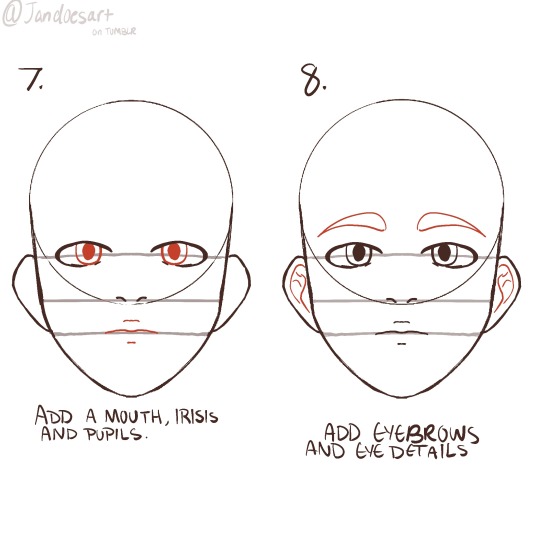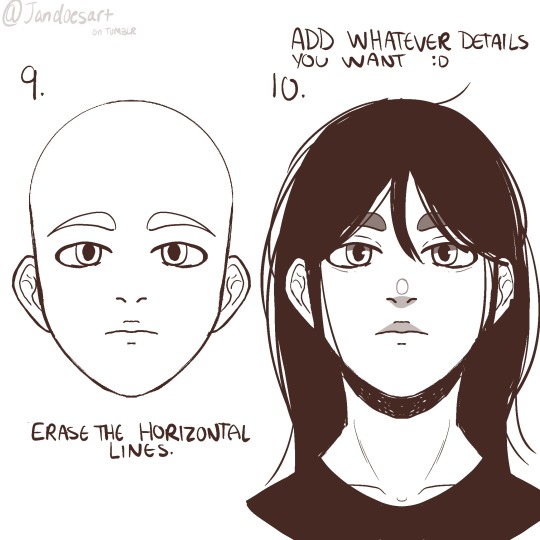#Steps for beginners
Explore tagged Tumblr posts
Text
10 Easy Steps to Get Your Writing Career Started Right Away!
To kickstart your writing career, begin by refining your skills and building an online presence. Next, network with other writers and create a portfolio to showcase your work.
Embarking on a writing career can seem daunting, but with the right steps, you can launch your journey successfully. As you look to turn your passion for words into a profession, it’s imperative to focus on skill development and strategic self-promotion.
Today, a significant online footprint is crucial for aspiring writers. Creating a robust digital portfolio will serve as the cornerstone of your career, displaying your talents to potential clients or employers. Networking isn’t just a buzzword; it’s a gateway to opportunities, mentorship, and collaborative projects that can accelerate your growth. With the internet at your fingertips, there are countless resources available to help you enhance your writing abilities, stay updated on industry trends, and connect with writing communities. Begin with clarity of purpose and a commitment to continual learning, and you’ll find that launching your writing career can be a structured and clear-cut endeavor.

>> My Best Recommended & Proven Way to Make $100 Daily – Watch THIS Video FREE Training to START >>
The Call Of The Word: Is Writing Your True Passion?
The Call of the Word: Is the symphony of sentences and the rhythm of rhetoric music to your ears? Do you find solace in the warm embrace of pages? If so, writing might just be your true passion. Embarking on this journey requires a blend of creativity, dedication, and strategy.
Identifying Your Niche In Writing
Discovering your niche is akin to finding your home in the vast world of words. It’s where your thoughts flow freely and your voice resounds with authenticity. Consider the following to uncover your writing haven:
Interests: What topics spark joy in your heart? List them down.
Expertise: Are you an expert in a field? Highlight it.
Market Demands: Seek out what readers crave and align it with your interests.
Feedback: Share your work. Note what resonates with your audience.
The Role Of Passion In A Writing Career
Passion fuels persistence, the cornerstone of any successful writing career. It powers you through challenges and sparks creative fires. To gauge if passion drives your writing, reflect on these points:
Do stories and ideas constantly dance in your head?
Do you feel a sense of fulfillment when words form on a page?
Are you willing to write regularly, with or without immediate rewards?
Passion is not just the initial spark; it’s the relentless engine that sustains your writing journey.
Crafting Your Writer’s Toolkit
Embarking on a writing career can be as thrilling as it is daunting. The key to smoothing the path lies in preparing a robust writer’s toolkit. Think of it as your trusty sidekick, equipped with everything necessary to tackle any writing challenge that comes your way. Let’s assemble the essential gear to kickstart your writing journey with confidence!
Essential Tools For Every Aspiring Writer
Building a strong foundation starts with the right tools. These items form the core of your writer’s toolkit:
Reliable Writing Software: Choose a word processor like Microsoft Word or Google Docs.
Note-Taking Apps: Apps like Evernote or OneNote keep your ideas organized.
Grammar and Style Guides: Resources like Grammarly or the Hemingway Editor enhance your writing.
Inspirational Reading Material: Fill your shelves with books that ignite your creativity.
A Dedicated Notebook: For jotting down thoughts that strike at any hour.
Enhancing Your Digital Toolkit For Writing
Your digital toolkit is crucial for modern writing success. Ensure these tech-savvy items are at your fingertips:
Cloud Storage: Services like Dropbox or Google Drive safeguard your work.
Writing Community Access: Join platforms like Wattpad or Scribophile for feedback.
Online Courses and Webinars: Sites like Coursera or Udemy to sharpen your skills.
Keyword Research Tools: Utilize Google Trends or Ubersuggest for SEO-centric writing.
Social Media Profiles: Promote your work on Twitter, LinkedIn, or Instagram.
Pack these essentials, and your writer’s toolkit will be ready to tackle any task. Embrace the journey with your well-stocked arsenal!
>> My Best Recommended & Proven Way to Make $100 Daily – Watch THIS Video FREE Training to START >>
Honing Your Craft: Writing Practices
Becoming a prolific writer requires dedication and practice. Start by fostering habits that sharpen your writing abilities. Aim for growth each day. Your skills will blossom with consistent effort. Let’s delve into the steps to refine your writing talent.
Daily Writing Routines To Boost Your Skills
Create a daily writing ritual. This habit forms the backbone of your journey. Commit to writing a minimum word count each day. The content doesn’t need perfection. The goal is to build muscle memory and confidence.
Start a journal. Capture thoughts and daily experiences. It sharpens your ability to observe details.
Play with prompts. They ignite creativity and offer fresh ideas. Use them to spark your imagination.
Write letters. Even if you don’t send them, articulate your voice and connect deeply with topics.
Time of DayWriting ActivityWord Count GoalMorningJournal Entry300 wordsAfternoonShort Story500 wordsEveningReflective Essay400 words
The Importance Of Reading As A Writer
Writers must be avid readers. Reading widens vocabulary and exposes you to different styles. You learn new techniques and storytelling methods. Dedicate time to read each day.
Diverse genres. Explore various genres to understand a range of writing styles.
Analyze writing. Don’t just read for pleasure. Study the author’s choices and use of language.
Take notes. Jot down phrases or structures you admire. Incorporate them into your writing practice.
Remember, reading is as crucial as writing. Both activities complement each other. They fuel your imagination and hone your craft. Invest time in reading broadly and deeply.
Building An Online Presence
Embarking on a writing career signals the start of an exciting adventure. However, before you can captivate an audience with your words, you must first be visible to them. Building an online presence is critical. This digital footprint makes you searchable and accessible to potential readers, clients, and collaborators. Let’s explore some essential steps to establish your online identity.
Creating A Professional Writer’s Website
Your writer’s website is your professional portfolio, storefront, and business card all in one. Here are key elements to include:
Home Page: An inviting welcome with your picture and tagline.
About Page: Your story, experience, and why you write.
Portfolio: Samples of your work, neatly categorized.
Contact: Easy ways to reach you.
Blog: Your thoughts and updates to keep visitors engaged.
Ensure your website is clean, navigable, and mobile-friendly. Use a straightforward domain name, preferably yourname.com
Social Media Strategies For Writers
Social media platforms are tools to amplify your voice and connect with your audience.
PlatformUsageContent TypeTwitterNetworkingQuick thoughts, industry newsFacebookCommunity buildingLong-form posts, event promotionInstagramVisual storytellingImages, short videos, storiesLinkedInProfessional brandingArticles, career milestones
Choose platforms that align with your brand and target audience. Post consistently, engage with followers, and showcase your writing style. Creating valuable content tailored to each platform can grow your followers and elevate your professional status.
Navigating The World Of Publishing
Embarking on a writing journey is thrilling! Entering the publishing world can be intimidating, but it need not be daunting. With some guidance, you can navigate this arena with confidence. Here’s how to understand your options and pitch your work properly, bringing you closer to your dream of becoming a published author.
Understanding Different Publishing Options
Before diving into the publishing lakes, you must know the types of waters. Traditional publishing involves established houses with rigorous selection processes. They often provide thorough support but expect high-quality manuscripts.
Self-publishing grants more control over your content and faster turnaround but requires self-marketing.
Last, hybrid publishing blends both, offering flexibility with some professional services.
Writing Queries And Pitching To Publishers
Once you’re set on a publishing route, create a striking query letter or book proposal. A concise query letter is a gold key to an editor’s attention. Start with a snappy introduction, an overview of your work, your bio, and the reason you think they’re the perfect fit for your manuscript. Remember, a well-crafted pitch sets the stage for your writing journey.
Highlight the uniqueness of your story.
Include a captivating hook to garner interest.
Show off your market awareness and target audience.
Maintain a professional tone throughout.
Ensure the letter is error-free and flawlessly formatted.
Embrace this new chapter with an informed, proactive stance. With consistency and perseverance, you’re sure to make waves in the publishing world!
>> My Best Recommended & Proven Way to Make $100 Daily – Watch THIS Video FREE Training to START >>
Monetizing Your Writing
You love to write and dream of making it your career. The good news is that you can start earning from your writing today. With various options available, you can choose paths that align with your passions and lifestyle. Let’s dive into effective ways to monetize your writing, comparing freelancing with salaried positions and exploring diverse revenue streams.
Freelancing Vs. Salaried Writing Positions
Freelancing and salaried positions offer different benefits. Freelancers enjoy flexibility and variety, taking on projects that excite them. Salaried writers benefit from stability and regular income. Your choice should match your financial needs and work preferences.
Freelancing: Set your schedule, pick your projects, and be your boss.
Salaried Positions: Regular paychecks, company benefits, and team collaboration.
Consider starting with freelancing to build a diverse portfolio. A strong portfolio can lead to a full-time position later. Both paths are viable and can be rewarding for your writing career.
Exploring Revenue Streams For Writers
Expanding your revenue sources is vital for a stable writing income. There are many ways for writers to earn money beyond traditional job roles. Here are a few to consider:
Revenue StreamDescriptionPotential IncomeWriting ArticlesCreate content for blogs or websitesVaries by length and nicheSelf-PublishingWrite and sell your booksRoyalties per book saleCopywritingWrite persuasive content for businessesPer project or hourly ratesContent MarketingStrategy and creation for brand growthRetainer or project-based payAffiliate MarketingEarn by promoting products or servicesCommission on sales
Get creative with your skills and combine different streams for a robust income. For example, you may freelance while building your blog with affiliate links. Think outside the box, and do not hesitate to blend various writing opportunities.
Growing And Sustaining Your Writing Career
Embarking on a writing career sparks excitement and possibility. Yet, the journey from budding writer to established author demands effort beyond just crafting stories or articles. Success in the writing world hinges on building a sustainable career. This requires strategy, dedication, and a proactive mindset.
Networking With Other Writers And Industry Professionals
Connections propel careers forward in the writing industry. Networking is key. With the right community, you gain insights, support, and opportunities. Engage with others through these actionable points:
Join writing forums or online communities
Attend writing workshops or conferences
Follow industry professionals on social media
Participate in local writers’ groups or clubs
Collaborate on projects with peers
Sharing experiences and challenges with fellow writers can lead to partnerships, mentorships, and referrals to new gigs.
Setting Long-term Goals And Staying Motivated
Setting GoalsStaying Motivated
Define clear, achievable objectives
Break down goals into smaller tasks
Set deadlines for each milestone
Celebrate small wins regularly
Keep a journal of progress
Read or listen to success stories
Focus on long-term achievements to maintain a fulfilling career. Create a roadmap and celebrate milestones to stay driven. Balancing ambition with realistic goals keeps motivation high and burnout at bay.
Frequently Asked Questions
Can I Start Writing Freelancing?
Yes, you can start a freelancing writing career by creating a portfolio, joining freelance websites, and networking with potential clients.
What Qualifications Needed For Writing?
No formal qualifications are necessary, but strong writing skills, excellent grammar, and a passion for writing are essential to succeed.
How To Find Writing Job Opportunities?
Explore online job platforms, reach out to content agencies, network in writing communities, and check social media for companies seeking writers.
What Is Essential In Starting Writing?
Understanding your niche, mastering the art of writing, and being persistent are crucial when launching your writing career.
Tips For Maintaining A Writing Routine?
Set clear goals, create a dedicated workspace, schedule regular writing hours, and minimize distractions to maintain a consistent writing routine.
Conclusion
Embarking on your writing journey is thrilling. Remember, consistency and dedication are your best allies. Use the steps outlined to build a solid foundation. Keep exploring, learning, and don’t fear making mistakes. Grab your pen, power up your device, and start crafting your future now – the world awaits your stories.
>> My Best Recommended & Proven Way to Make $100 Daily – Watch THIS Video FREE Training to START >>
Thanks for reading my article on 10 Easy Steps to Get Your Writing Career Started Right Away!, hope it will help!
Affiliate Disclaimer :
This article Contain may be affiliate links, which means I receive a small commission at NO ADDITIONAL cost to you if you decide to purchase something. While we receive affiliate compensation for reviews / promotions on this article, we always offer honest opinions, users experiences and real views related to the product or service itself. Our goal is to help readers make the best purchasing decisions, however, the testimonies and opinions expressed are ours only. As always you should do your own thoughts to verify any claims, results and stats before making any kind of purchase. Clicking links or purchasing products recommended in this article may generate income for this product from affiliate commissions and you should assume we are compensated for any purchases you make. We review products and services you might find interesting. If you purchase them, we might get a share of the commission from the sale from our partners. This does not drive our decision as to whether or not a product is featured or recommended.
Source : 10 Easy Steps to Get Your Writing Career Started Right Away!
#Writing career#Getting started#Steps for beginners#Writing tips#Career initiation#Starting guide#Aspiring writers#Writing journey#Kickstart career#Beginner's guide#Career launchpad#Writing advice#Path to writing#Writer's beginnings#Authorship journey#Writing aspirations#Starting off right#Career foundation#Writing initiation#Beginner's steps#Authorship tips#Launching career#Writing essentials#Affiliate Earnings#Affiliate Marketing#Affiliate Marketing Guide#Affiliate Marketing Mastery#Affiliate Marketing Training#Affiliate Secrets#Affiliate Strategies
0 notes
Text



Here are some painting tips, as promised. I hope they will help beginner artists!
Composition
Position of characters on the sheet
Choose the location of your character to be beneficial to the appearance of the art in general, you can accentuate the important places where the viewer should look first by using perspective and composition.
Tone sketch
Set the lights based on references, but adjust to your own, favourable lighting.
Contrasts come in many forms. Contrast in color (warm and cold), values (dark and light), shapes soft and hard, straight and curve, etc.
Less is better. Work on the details of the most important part of your work while cutting down everything else. If you do strong detail in one place, don't forget to add looser detail in another so the viewer's eye can rest. For example: If you are detailing a portrait, don't detail the background as much. Next to a place of high detail, there should be a place of low detail so that the picture does not look overloaded.
All in all, you can twist and break perspective, anatomy and shapes to convey your idea better. No rules are made of steel, they should support your imagination, not restrict it
Anatomy
Break down objects into simple shapes to arrange them in space.
Check references! plasticity comes first, then structure (muscles are important, but proportions and line of movement come first).
Take a photo of yourself, you will be able to understand how to perform your pose naturally. Color/light.
Light is part of the composition, put it in a way that highlights the important things. Air perspective
General rules of composition. From the general to the particular, first prepare the general scene, correctly place contrasts and accents, make everything important in contrast, and take the unimportant into an aerial perspective. (aerial perspective, or atmospheric perspective, refers to the technique of creating an illusion of depth by depicting distant objects as paler, less detailed, and usually bluer than near objects.)
When all the points are ready we can start working out the details.
When all the details are finished again it's back to the overall picture, looking at it from a distance. Check if the accents you wanted to draw attention to are working. They should have the highest contrast. Check if the contrast is not created by objects on the edges, where you don't want the viewer to pay attention. For example, if you are painting a portrait then the focus should be on the face and not on the details of the clothes or details in the background. (You can always convert the image to black and white and check the contrast)
Save the stages of your work to check against the initial idea and see what things have changed for better or worse!
#digital art#art tips#beginner artist#small artist#digital artist#art advice#art tutorial#art guide#step by step#drawing basics
677 notes
·
View notes
Text

lord help me them blocks gonna be the death of me
#blockbench#crow talks#trying to quick learn the basics#i made a pokeball#then the tutorial went too fast and cut out steps despite supposed to be beginner friendly HELP hdfhfshVGHBHSB
176 notes
·
View notes
Text

brainrot so bad imma need to learn how to draw
#yes i did search on youtube procreate for beginners#my babies i will eventually get to draw u!!! i must!!#or at least a lil smth smth for my fics#but hey baby steps#here u go#jegulus#marauders#regulus black#james potter#james x regulus#starchaser#sunseeker#potential fanart one day
77 notes
·
View notes
Text
My mom sent me a watercolor she just did and I’m going a little crazy over it, tbh.
#it’s such a simple subject#flowers in a field at sunset#and it’s the sunflower + tulips + lupin combination that you see whenever you ask somebody to draw different flowers#but she has this red abstract squiggly border that looks just like the illuminations in manuscripts#and the sunset wash bleeds all together#and there’s this gradient in the muddy yellow of the sunflower#and you look at it. and you can tell. whoever made this had fun.#they enjoyed putting the colors down#the green layers of grass#the delicate squiggles of red#the tiny little flowers and the giant swath of sky#I’ve ranted and raved about how technical excellence /needs/ to be pursued#but - perhaps because I believe in excellence and not despite of it -#Every step along the way#every ‘beginner’s mistake’#every naive piece every foray into something new every attempt to make something beautiful#just inspires so much love and joy in me.#It’s beautiful. because it’s an attempt to express the inexpressible.
92 notes
·
View notes
Text
How to Sew Own Clothes for Beginners - Free Sewing Patterns
In this post, you will learn how to sew own clothes as beginner. Love what you see ? Support me by snagging some cool items from my shop! Every purchase helps me bring you more awesome content. Thank you! Shop Now Why Sew Your Own Clothes? Sewing your own clothes is a fantastic way to express your personal preferences and style. It offers the freedom to create unique pieces that fit you…
#Beginner-friendly sewing patterns#diy clothing#Easy Sewing Projects#free sewing patterns#How to Sew#Learn to sew#Personal preferences#Sewing journey#Sewing Machine Basics#sewing skills#Sewing Techniques#Sewing Tips for Beginners#step-by-step sewing guide
53 notes
·
View notes
Text
tfw you're at a ball and someone asks if you know how to waltz and you say yes but then you get on the floor and discover that she knows only modern waltz and you know only 1860s waltz
there is no box step in 1860s waltz
#historical dance#ballroom#ballroom dance#the basic idea is the same but. there's me following and trying to start with a step straight forward onto my right foot#and banging into her knee because she is not doing the diagonal step to the side with her left foot that I was expecting#I know so many cool variations! ...assuming we're doing a mid-19th-century waltz! and if we're not I will step on your toes like a beginner#I could learn. I just...haven't had a reason to yet.
122 notes
·
View notes
Text
How to Draw a Face!
For many, drawing a face can be very daunting and can seem very complicated. However, drawing a face can be a lot more simple than you'd think.
Here are a few simple tips to follow if you're just learning to draw a face. These are just some basics and as you get more confident you can change up features and alter proportions to your liking. Not everyone looks the same and facial features can vary greatly.
Start with a circle
This circle will help provide you with baseline info on proportioning the features of the face. From the circle you can extend two lines downward and connect them with a flat u shape.

Add some Lines
These lines will help guide the facial features.

Draw some eyes and ears
When drawing ears, sort of go in with the mindset of two C's. And for the eyes think of incomplete ovals.

Finishing it off!
Just add some circles to the inside of the eyes. You also can add some details to the ears if you'd like. The eyebrows may take some trial and error but you've got it!

Random details :D
Just go ahead and erase the horizontal lines and now you have a complete face! Congratulations!with step 10, I added some shading and hair. As well as a neck just to make it feel more complete.

Next post I'll provide a few examples of alterations that can be done to change up your character and make them your own. Hope this helped. :D
#art tutorial#art#drawing tips#how to draw a face#step by step#drawing#drawing tutorial#sketch#how to draw#drawing for beginners#beginner artist#art stuff#drawing stuff
83 notes
·
View notes
Text

Trouble In Paradise #3: What are you?
So I'm on year 3 of this thing we call an art journey and let me tell you, every time I think I can draw the human head it turns out I have no idea what it even looks like or if suddenly there are 3 eyes and 5 noses or something and then I go do some studies only for the cycle to repeat itself
Anyway all critiques are welcome I am open to criticisms
Debating on weather the next one will have the scandalous content, don't know how much I can get away with so don't get too exited now.
#artwork#comic#digital art#beginner artist#character art#dragonblood#webtoon#comics#lgbt#lgbtqia#lgbt pride#queer#queer pride#nonbinary#lgbtq community#enby#artists on tumblr#small artist#lgbtq#pride#coming out first steps#boywife#poly#polyamory#polyamorous#bisexual#date#date night#dating#pure
14 notes
·
View notes
Text
skating... makes u very sweaty very quickly
#especially if ur trying and failing to land tricks LMAO#i just had to keep scaling back expectations like ok. lets not start with an ollie (im still practicing tho#and im getting CLOSE. i can FEEL IT.)#lets try walking the dog (<- was described in one vid as a 'beginner trick before ollie')#(it is not. in my opinion. a beginner trick.)#one video on walking the dog says u should practice tic tacs and monster walks#i can do tic tacs but am unable to practice them ill have to go to a park x_x#monster walk..... im getting there#in my defense i was trying them without looking up how to do them i just saw a short clip and was like ok ill give it a go#having the same problem with the dog walking: i cant do the full 180...#anyways. stepping back on the longboard felt like a dream LMAO#note: i am probably never going to touch the ramps. holy shit.#<- this all started because i was sick of walking and didnt want to bike (too easy to steal) so i said id longboard to commute#well. very little longboard practice after i accidentally went a little too fast down a hill and freaked out#but hey. in theory practicing skateboard should help with longboard
16 notes
·
View notes
Text
I feel like half the reason crochet got so popular over the last few years while knitting hasn't had as big of a new following is due to the fact that it's not too hard to find good crochet tutorials, but all the knitting tutorials on YouTube fucking SUCK.
#i tried looking up how to double stockinette stitch#because it has the look i want in my project#and there's so many vids that say “FOR BEGINNERS”#AND THEN THEY DONT EVEN SHOW YOU HOW TO CAST ON#they're just like 'ok we're starting at row 7!! :)#like NO#if it's for beginners START FROM THE BEGINNING#also half the videos spend like 5 min talking about what yarn they use#and then the actual tutorial is so friggen quick and they make sure their fingers are in the way the entire time#and only show you each step once#it's AWFUL#knitting#knit
17 notes
·
View notes
Text

Started playing Fear and Hunger recently and this guy is pretty silly. I like that he likes bugs, that’s a green flag in my book, bugs are great.
Nothing in this post in particular is mature, but the game itself is, it’s a pretty dark horror game, so I’ll be putting some content warnings in the tags so any talk about the game on my account can be filtered out easier!
Some thoughts about the game under a cut :3
I haven’t played as Enki tho, I picked Cahara because he’s easier and it’s my first playthrough, and he’s pretty cool too. I really love the character and monster designs in this game. The art is super cool :3. I’ve had the worst luck this run tho oh my god; I started the game took like two steps and immediately got blindsighted by three dogs. All the enemies in the first left entrance area spawned in the first room. Two elite guards spawned in the room past the prisons instead of the usual one. Moonless would not spawn for like a solid few reloads and then ended up on the bottom of the map instead of the top where they usually are. I talked to Nosramus (love them, they’re great, they were off screen the whole conversation tho whoops) and immediately afterwards got the crow mauler text and had to leave the room. Got D’arce and promptly ran into a yellow mage and lost my arm! It’s been wild and I’m even just playing on easy mode 💀💀💀!!! My computer also kinda sucks and lags sometimes, but yeah! The game is fun!!!!! I have no idea how far I am in it, but I’m almost to where Le’garde is captured. My whole strategy has been fuck around and find out and it’s working XD!!! I kinda expected it to be scarier, but that might be because I’m a little used to horror as a genre in general, but it’s a nice balance of spooky atmosphere and usual RPG action stuff in a way that comes off sincere and not like edgy for the sake of being edgy if that makes sense. It’s cool :3
Anyway there’s a lot of games I’ve started recently and haven’t finished so I guess I’ll be playing those for a while. I still need to beat CV64, I’m just currently stuck on the uh gear platforming section with the bomb. If you know, you know 💀💀💀. It’s hard. I also have to beat Curse of Darkness, but I’m really close to the end in that one I’m just getting all the random side rooms and stuff. Raising more innocent devils besides my main team just to be able to open a door is a little tedious tbh, but eh it’s an excuse to play the game for longer so I’ll take it. But yeah, hopefully life actually lets me beat all these games so I can talk about them more (TwT ;).
#fear and hunger#funger#fear and hunger 1#enki ankarian#fear and hunger enki#f&h enki#f&h#f&h fanart#art post#yippie! gaming moment#my laptop SUCKS though ong#sometimes it just makes loud static sounds whenever it needs an update at random times#I have a video of it yelling at me to update it in the middle of when I was playing funger like shut up I am going to update you after this#also the lag makes it really really hard to enter doors help me—#I’ll press the arrow key once and Cahara (whom I’ve named TheRizzler) will take TWO STEPS#I gotta do all the extra bullshit to accommodate my dumbass former highschool laptop’s antics like 💀💀💀#here’s to hoping it doesn’t suddenly lose sound on me like it used to lmaooooooo#yeah the game is fun tho ong I have no idea what I’m doing 😎#my guy TheRizzler has died of infection and bleeding a lot cause I couldn’t find the items to cure it lmao#once I do manage to beat the game eventually I’ll probably play Enki next even though he’s like a bad beginner choice cause he’s silly!!!#I found out recently I have enough stuff to closet cosplay him and did that a while back and the fit slays honestly#if I ever get comfortable enough to show my face on here I might post about it but for now ehhhhhh#tw horror#tw horror game#cw horror#cw fear and hunger#incoherent rambling#this game is also making me wanna work on my game too like#I’m stuck in the process of making it cause I can’t decide thematically if I want a battle system and enemies or not#and also map making is hard and tedious aughhh I will do it for the silly ocs tho rahhhhhh funger bestow upon me inspiration pls
33 notes
·
View notes
Text
From now and till November 30th,2024 I'm taking Autum OC request.
What it means is the theme must/will be fall. Any activity related to it if accepted. Provide as much details as you want if you have anything specific in mind and good reference for the OC.
Do;
Only OCs, any fandom
Canon x OC is accepted :3
OC x OC
Not more than a group of three
Slightly suggestive (you know stay in the good grace of Tumblr)
Don't;
The usual story; racist, homo/transphobic, hate message, fetish, etc...
Super detailed (if your OC has a lot of them, I'll simplify it, sorry)
Mecha, furry (I'm just not good enough)
I still allow myself to refuse to make the request if it feels dubious and/or thing happen in my personal life that force me to slow down on the amount I can accept.
Note: During this time I'll have family visiting at my place, on top of having work and other stuff so it could take me a little while to finish the request.
#ggvii talks#original character#artist on tumblr#listen the fact that I'm opening this to a bigger audience than just Cod OC#is very a lot! that come from someone who probably did too many requests in my beginner years#honestly I felt like a vending machine more than anything#so you know a big step!#hence why I still put some limits but you know? I just want to draw OCs!!
7 notes
·
View notes
Text

Made some more progress on this one as well and changed a few more things. Still a major WIP but I decided to turn her into a SCP :3
#beginner artist#art#horror#monster fucker#digital art#horror art#oc art#monster#scp foundation#scp fandom#scp fanart#scp#scp oc#she can step on me
10 notes
·
View notes
Text

MISA MY LOVE MWAHMWAH
#artist#digital art#digital drawing#illustration#art style#stylized#rendering#death note#she can step on me /lhj#misa amane#misa#misa misa#fanart#death note fanart#made in ibis paint#ibispaintdrawing#ibispaint art#ibispaintapp#ibispaintx#beginner artist
19 notes
·
View notes
Text
Achievement Unlocked: Stupidest Boy Scout
With hard work and dedication, you can now tie the two knots that any six year old can master!
#chit chat#everyone please clap#after like two hours of trying to figure this shit out#i have finally managed step one#yay :)#when i master doing the most basic flower for absolute beginners i will show y’all what I’m doing lmao
8 notes
·
View notes